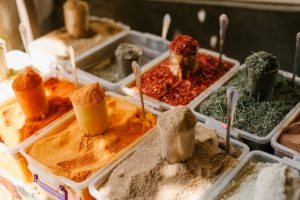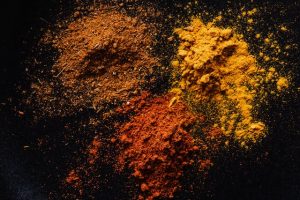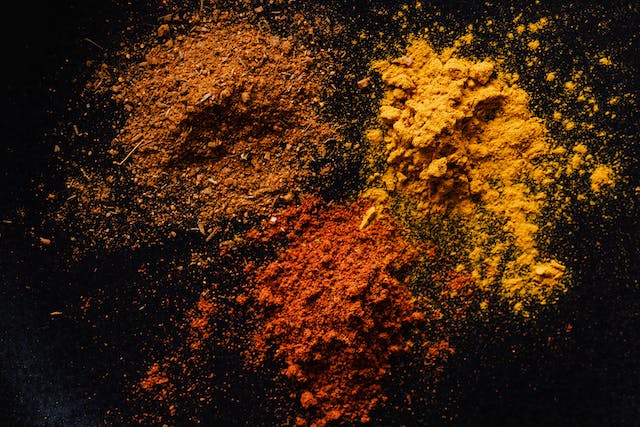Introduction
In the world of culinary arts, where each spice holds the potential to transform an ordinary dish into a culinary masterpiece, paprika stands out as a versatile and vibrant ingredient. Join Maestra Lucas, a seasoned culinary expert, on a gastronomic journey that promises to revolutionize the way you approach seasoning. In this comprehensive guide, we will explore the rich history of paprika, dissect its various types, learn advanced techniques for its incorporation, and discover Maestra Lucas’s expert tips and tricks to elevate your dishes. Get ready to unlock culinary excellence as we delve into the intricate world of mastering paprika.
The Rich History of Paprika
To truly appreciate the essence of paprika, one must understand its roots. Originating in Central Mexico, paprika made its way to Spain in the 16th century, courtesy of explorers returning from the New World. From there, it spread across Europe, with Hungary becoming a key player in paprika production. Today, paprika is an integral part of global cuisine, each region infusing its unique touch into this red-hued spice.

Navigating Paprika Types
Paprika comes in various types, each offering a distinct flavor profile that can significantly impact your dishes. Maestra Lucas guides us through the nuances of sweet, smoked, and hot paprika.
Sweet Paprika: Unveiling Mild Fruity Notes
Sweet paprika, with its mild and fruity undertones, is a kitchen essential. Ideal for stews, soups, and roasts, its versatility knows no bounds. Maestra Lucas recommends it for slow-cooked dishes, where its subtle flavors have time to meld with the ingredients, creating a symphony of taste.
Smoked Paprika: Adding Richness and Depth
For those seeking a touch of smokiness in their dishes, smoked paprika is the answer. Maestra Lucas suggests pairing it with grilled meats and seafood to enhance their flavors. The richness and depth it impart make it a go-to spice for barbecued delights.
Hot Paprika: Igniting Culinary Passion
If you crave bold and spicy flavors, hot paprika is your ally. Perfect for chili, curry, and rubs, this variety adds intensity to your dishes. Maestra Lucas recommends using it judiciously to maintain a balance that tantalizes the taste buds without overwhelming them.
Paprika’s Alchemy: Enhancing Flavors with Precision
Now that we’ve explored the types, let’s delve into the art of incorporating paprika with precision. Maestra Lucas shares advanced techniques that can elevate your seasoning game, ensuring that the flavors in your dishes are not just good but extraordinary.
Layering Flavors: The Paprika Symphony
Just like a composer carefully layers different musical notes to create a symphony, Maestra Lucas advocates for layering flavors with paprika. Start with a base note of sweet paprika, add the middle note of smoked paprika for depth, and finish with a high note of hot paprika for that perfect crescendo of flavor Unlock the full potential of paprika by infusing oils and broths with this magical spice. Maestra Lucas reveals the secrets of infusing paprika into oils and broths, allowing you to effortlessly incorporate its essence into various dishes.
Maestra’s Palette: Crafting Unique Paprika Blends
Become a culinary artist as Maestra Lucas encourages experimentation with paprika blends. Mix different types and proportions to create your signature paprika blend, adding a personal touch to your dishes.

Maestra’s Picks: Pairing Paprika with Ingredients
Paprika’s magic extends beyond its types and incorporation techniques. Maestra Lucas shares her favorite pairings, demonstrating how this spice can harmonize with various ingredients to create culinary masterpieces. For meat lovers, paprika is a game-changer. Maestra Lucas suggests pairing sweet paprika with chicken for a delightful roast, smoked paprika with beef for a rich stew, and hot paprika with pork for a spicy kick Vegetarians, fear not! Paprika is equally adept at enhancing the flavors of vegetables. Maestra Lucas recommends using sweet paprika in vegetable stir-fries, smoked paprika in grilled vegetable skewers, and hot paprika in spicy vegetable curries.
Seafood: Paprika’s Maritime Adventure
Bring the ocean to your plate with paprika-infused seafood dishes. Sweet paprika complements the delicate flavors of fish, smoked paprika enhances the richness of grilled shrimp, and hot paprika adds a bold twist to seafood paella.
Paprika Varieties
| Paprika Type | Flavor Profile | Best Uses | Maestra’s Recommendation |
|---|---|---|---|
| Sweet | Mild, Fruity | Stews, Soups, Roasts | Perfect for slow-cooked dishes |
| Smoked | Rich, Smoky | Grilled Meats, Seafood | Adds depth to barbecued delights. |
| Hot | Spicy, Intense | Chili, Curry, Rubs | For those who crave bold flavors. |
Conclusion:
In the grand tapestry of culinary arts, paprika emerges as a thread that weaves through history, cultures, and kitchens worldwide. As we conclude our journey guided by Maestra Lucas, it’s evident that paprika is not merely a spice; it’s a catalyst for culinary innovation, a key to unlocking flavors that tantalize the taste buds and elevate dishes to new heights. We began by unraveling the rich history of paprika, tracing its origins from Central Mexico to its transformation into a global culinary staple. With Maestra Lucas as our expert guide, we navigated the diverse landscape of paprika types sweet, smoked, and hot learning how each variety contributes to the symphony of flavors in our culinary creations.




